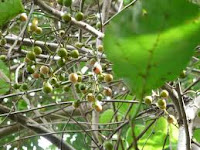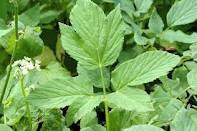There are several trees in the Alstonia genus, all in the Apocynaceae family, which means that they are related to the oleander and bitter oleander, among others. They grow across the tropics but originated in south-east Asia , being indigenous to Thailand Nicobar Islands and the Moluccas , Malaysia Indonesia Viet Nam Sri Lanka Seychelles Hawaii
Alstonia macrophylla has long leaves which grow in threes, and it is the length which gives it the name macrophylla (big leaves in Greek). These can be up to 30 centimetres long and 7 centimetres wide. It is an evergreen tree which grows to medium height, and can be found in the tropics.
 In the Indian subcontinent the bark is ground to a powder and mixed with water to form a paste which is applied to the skin to treat various skin diseases. In the
In the Indian subcontinent the bark is ground to a powder and mixed with water to form a paste which is applied to the skin to treat various skin diseases. In the  The leaves can be greased with coconut oil and then heated and applied as a hot poultice to sprains, bruises and dislocated joints, much in the way mallow is used in western countries.
The leaves can be greased with coconut oil and then heated and applied as a hot poultice to sprains, bruises and dislocated joints, much in the way mallow is used in western countries. The leaves contain tannin, triterpenoid, flavonoid, sterol, alkaloid and reducing sugars, and a few tests have been carried out on the different parts of this tree which suggest that the indole alkaloids have some cytotoxic effect on human lung cancer cell lines. (“Cytotoxic activity of indole alkaloids from Alstonia macrophylla “ Keawpradub, N. et al)
 It may also have some effect as a vaginal contraceptive according to another study, “Sperm mobility inhibiting activity of phytosterols from Alstonia macrophylla Wall. ex
It may also have some effect as a vaginal contraceptive according to another study, “Sperm mobility inhibiting activity of phytosterols from Alstonia macrophylla Wall. ex  Few studies have been carried out on this tree but it would seem that some of the traditional uses have been proven as studies have shown that it has antimicrobial and bacterial properties against some of the herpes viruses, and that it has some anti-inflammatory properties (the leaves are used for rheumatic pains in some traditional medicine systems) and can be of use in fevers.
Few studies have been carried out on this tree but it would seem that some of the traditional uses have been proven as studies have shown that it has antimicrobial and bacterial properties against some of the herpes viruses, and that it has some anti-inflammatory properties (the leaves are used for rheumatic pains in some traditional medicine systems) and can be of use in fevers.


















